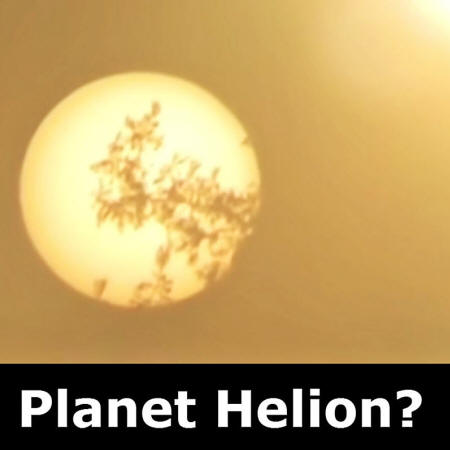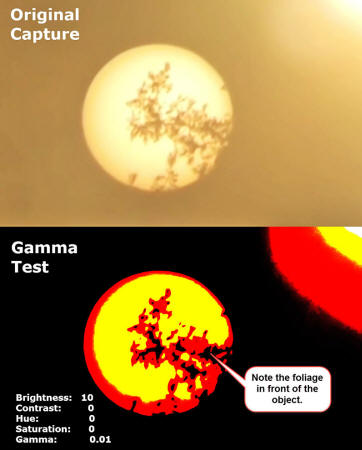|
December 29, 2015 from Yowusa Website
Over the past month we've seen an increase in reports of observations of bright objects near the Sun, primarily at the 7 o'clock and 1 o'clock positions.
This observation video posted to YouTube
on December 20, 2015 presents us with a frightening prospect.
Ergo, if this really is Helion, it's pretty darn close.
That being said, this report can only be construed as preliminary, and is by no means conclusive.
The actual channel is 'jeff P'. The provenance on this extreme zoom video is so poor that the claims of the maker of this video cannot be substantiated nor are we able to determine if the video equipment is reliable.
Yet, this video does present us with
some compellingly credible attributes that I will explain in my
analysis below.
However, before we delve into those
issues, we must address a more relevant issue. Is this a natural
celestial object?
So in terms of movement, we're moving in
the right direction.
So why is this important?
So the whole point of a gamma test is to
factor out misleading cold objects, so we can focus our attention on
the hot objects.
The gamma settings in the image shown to the right are as follows:
What the test shows is that our Helion candidate is a natural "hot" object.
Of particular interest is the tree branch in the foreground. If you compare the candidate with the sun, there is a marked gradient similarity. Another thing we found quite interesting are the gamma differences between the branch, stems, and leaves.
So assuming this is a natural object, then what could it be?
One of the common debunking attacks
we've see over the last year is the "lack of surface features"
argument that presumes that an object of interest must, like our
Moon, present clearly distinguishable surface features.
What about it being an unknown object? The original video maker claims this object of interest is a moon of Nibiru.
Our analysis shows that it could in fact
be the Planet Helion in the Planet X System as described in my book,
Being In It for the Species: The Universe Speaks, as noted
below.
If Helion is indeed a small gas giant, the debunker expectation of clearly distinguishable surface features does not apply.
Also, size plays a role here as well. In Being In It for the Species the size of Helion is given as 3.5 times the size of Earth (3.5 XE). Does this size qualify to be "a small gas giant?"
Yes, if you consider the fact that Neptune, a
known gas giant in our own system is 3.9 times bigger than the
Earth.
Major Planets
In the illustration above, Helion is shown as the innermost of the three major planets in the Planet X system, where Nibiru is the outermost.
So if our Helion candidate is in fact Helion, this means that Nemesis, the brown dwarf star at the heart of the Planet X System, is nearing perihelion, its closest distance to the sun.
After that, the guacamole starts to hit to the fan.
I usually do not waste any time responding, let alone looking at the images.
In the recent video, "Planet X System
Update for November 2015 No. 1 - Major Update No. 3" (below video),
it is explain at 27 minutes in, the five-step evaluation process and
exactly how to do our tests.
The lack of detailed information in
these types of videos, such as the provenance of the video, makes
them easy to discredit. It also makes it easier for anyone with an
interest
in Planet X research to be
trivialized and sidelined as "hysterical nutters."
Following a few guidelines will give these reports a credibility appropriate to the seriousness of the impending consequences of the Planet X System flyby.
I explain exactly how to capture quality still photos and videos and post them credibly the first time in the video, Planet X System Update for November 2015 No. 1 - Major Update No. 3 (above video).
If you see something worth reporting, capture it the right way and make a credible report.
That will make a difference...!
|




